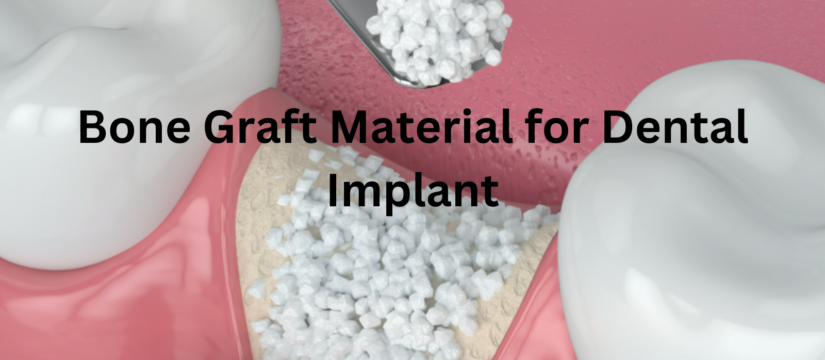
A Guide to Help You Make the Best Choice
Dental implants provide a lasting solution for missing teeth, but in some cases, the jawbone needs reinforcement before the implant can be placed. This is where bone grafting plays a role. Many patients wonder what bone graft material for dental implants is best and how it affects their recovery. At Dentist in Rockville MD, we prioritize your comfort by using the most effective materials to create a strong foundation for your dental implants.
Understanding the different types of bone graft materials and their benefits can help you feel confident in your treatment plan. Let’s explore how they work and which options may be right for you.
Why Is a Bone Graft Needed for Dental Implants?
A strong jawbone is necessary to support a dental implant. When bone loss has occurred, an implant may not have the stability needed for long-term success. A bone graft helps rebuild and strengthen the area, creating the ideal structure for an implant. Reasons a bone graft may be recommended include:
- Bone loss from missing teeth – When a tooth is lost, the bone underneath begins to shrink over time.
- Gum disease – Periodontal disease can lead to bone deterioration.
- Injury or trauma – Accidents that damage the jawbone may require grafting.
- Sinus expansion – In the upper jaw, bone loss can cause the sinus cavity to expand, reducing the space available for an implant.
A bone graft provides a solution by filling in these gaps and promoting new bone growth, allowing a secure base for Dental Implants in Rockville MD.

Types of Bone Graft Materials
Different types of bone graft materials are available, and the right choice depends on your specific needs.
1. Autograft (Your Own Bone)
An autograft is taken from another part of your body, usually the hip or another area of the jaw.
Benefits:
- High success rate due to the use of living bone cells.
- Reduces the risk of rejection since it comes from your own body.
Considerations:
- Requires an additional surgical site.
- Longer healing time due to two procedures.
2. Allograft (Donor Bone)
An allograft is sourced from a human tissue bank. The bone is processed and sterilized to remove all cells, leaving behind a safe framework for new bone to grow.
Benefits:
- No need for an additional surgery site.
- Readily available and widely used.
Considerations:
- Healing may take slightly longer compared to an autograft.
3. Xenograft (Animal Bone)
A xenograft is derived from animal bone, typically bovine (cow) bone. It is carefully processed to be safe for human use.
Benefits:
- Provides a strong foundation for new bone growth.
- No second surgery is required.
Considerations:
- Longer healing time compared to autografts.
4. Synthetic (Alloplastic) Bone Grafts
Alloplastic grafts are made from biocompatible materials like calcium phosphate or bioactive glass.
Benefits:
- No risk of disease transmission.
- Can be designed to mimic natural bone structure.
Considerations:
- Healing may take longer than with natural bone grafts.
Choosing the Best Bone Graft Material for Dental Implant
The best bone graft material for dental implants depends on your overall health, the location of the implant, and how much bone loss has occurred. Each option has its own advantages, and your dentist will help determine the most effective choice for your needs.
What to Expect During a Bone Graft Procedure
Understanding the process can help ease concerns about the procedure. Here’s what to expect:
- Preparation – The area is numbed to ensure comfort.
- Graft Placement – The chosen bone graft material is placed in the area of bone loss.
- Healing Phase – Over the next few months, the graft integrates with your natural bone.
- Implant Placement – Once healing is complete, the dental implant can be placed.
Recovery and Aftercare
Healing after a bone graft varies from person to person. Here are some tips to support a smooth recovery:
- Stick to soft foods – Avoid hard or crunchy foods while the area heals.
- Follow oral hygiene instructions – Keeping the area clean prevents infection.
- Take prescribed medications – If antibiotics or pain relievers are given, follow the instructions carefully.
- Attend follow-up visits – Regular checkups allow your dentist to monitor healing progress.
Strengthening Your Smile for the Future
A bone graft is an important step in making sure your dental implant is strong and long-lasting. The right material will help restore lost bone and provide the support needed for a confident smile. If you have questions about your options, schedule an appointment and discuss the best approach for your dental health.
